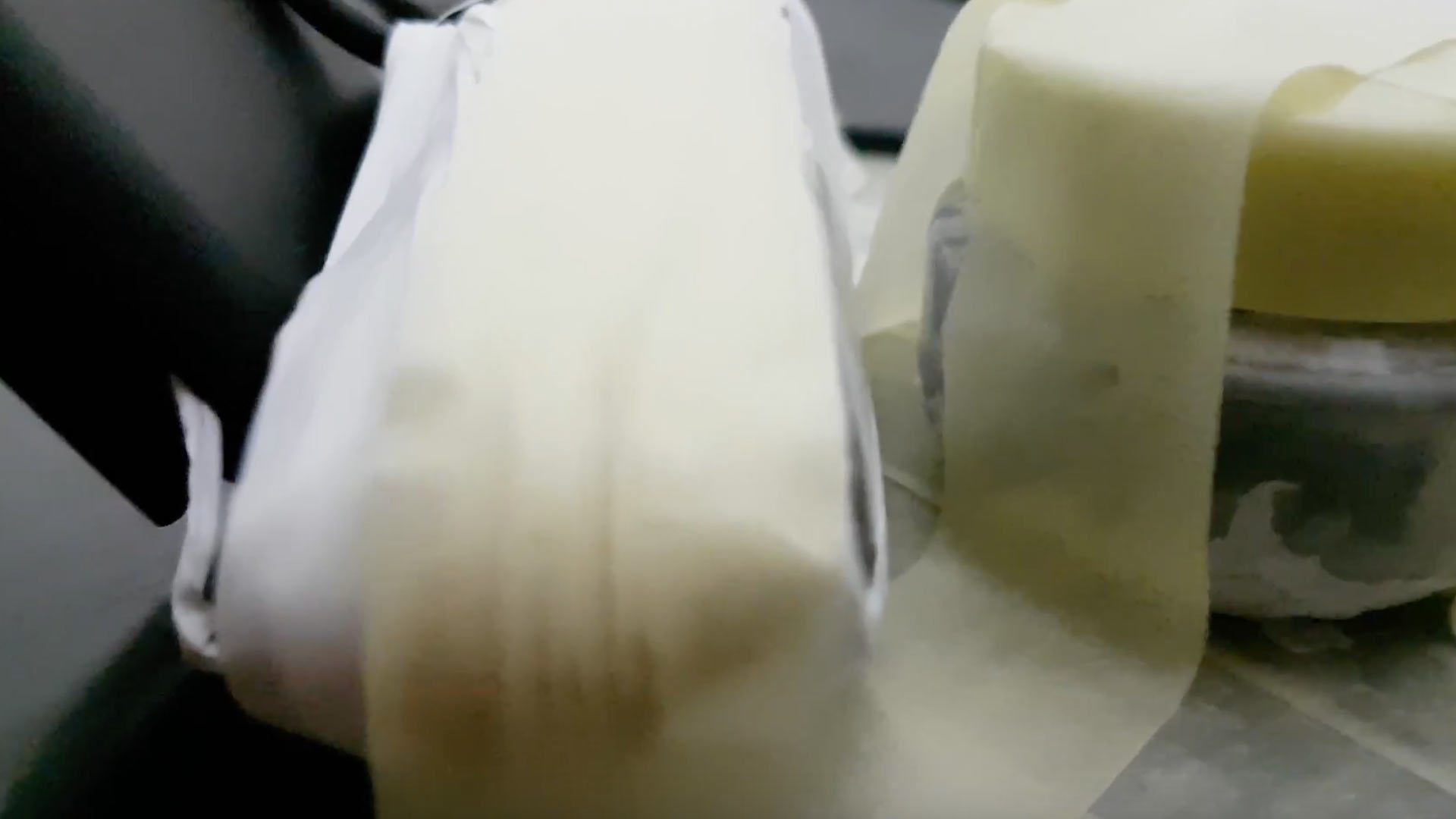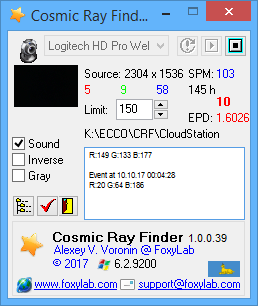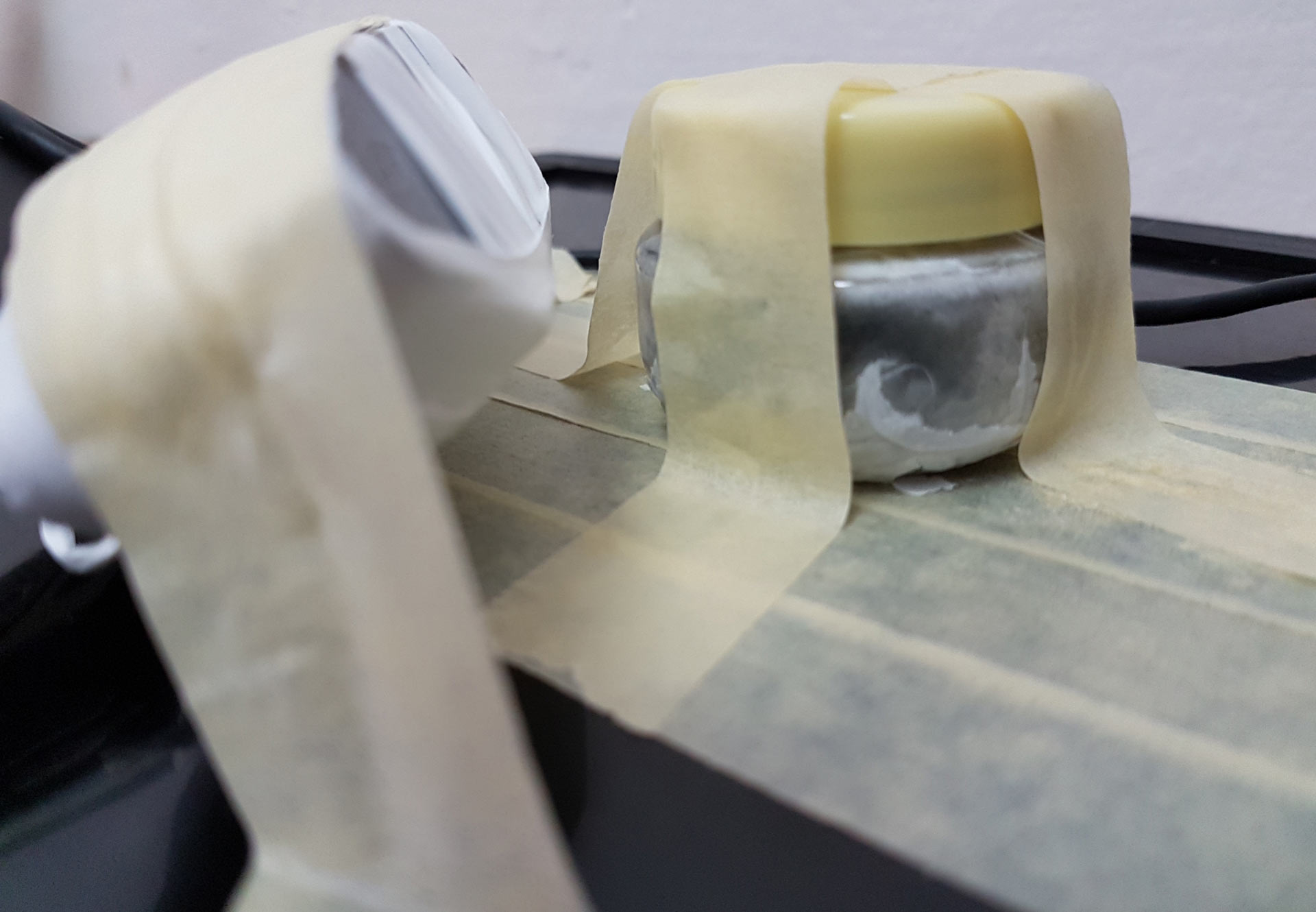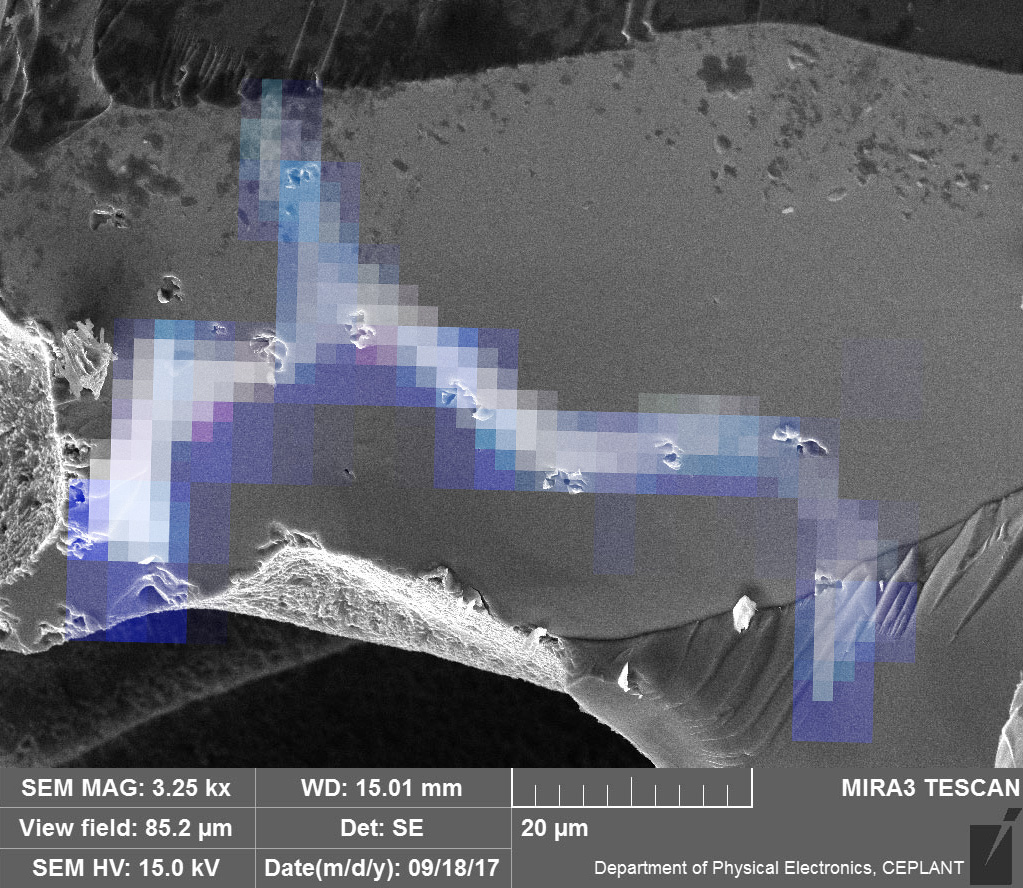A masked Logitech C910 camera was exposed with web camera in line with ECCO fuel emissions for 145 hours.
Arrangement


After 170 hours, when the cover was lifted, it was found that, unfortunately, the masking tape had come away, so at some point the position had changed

Results
Ten detections above an individual RGB level of 150 were made.
The pngs below have been cropped and colour adjusted for clarity from the raw images
The raw PNGs referenced in the table can be downloaded here for your analysis
| Image | Name | Event at | Maximum Colour | Notes |
|---|---|---|---|---|
 | 171004091712051 | 04.10.17 09:17:12 | R:23 G:50 B:164 | * |
 | 171004102211263 | 04.10.17 10:22:11 | R:18 G:74 B:160 | * |
 | 171006010934666 | 06.10.17 01:09:34 | R:155 G:158 B:196 | + |
 | 171006024558217 | 06.10.17 02:45:58 | R:168 G:120 B:150 | Muon & beta? |
 | 171007222252872 | 07.10.17 22:22:52 | R:110 G:124 B:151 | + |
 | 171008010548724 | 08.10.17 01:05:48 | R:110 G:122 B:159 | strange? No.1 |
 | 171009094607347 | 09.10.17 09:46:07 | R:154 G:139 B:164 | strange? No.2 |
 | 171009124849851 | 09.10.17 12:48:49 | R:135 G:152 B:189 | strange? No.3 |
 | 171009133949021 | 09.10.17 13:39:49 | R:149 G:133 B:177 | + |
 | 171010000428431 | 10.10.17 00:04:28 | R:20 G:64 B:186 | * |
Analysis
Firstly, it is not known when the masking tape gave way and the orientation of the webcam sensor with respect to the fuel changed.
The first two and the last detection (marked in the table with a *) can be ignored since there appears now to be an over sensitive blue group in the top middle of the sensor, perhaps the sensor has been damaged from the previous exposure, which, judging by what 'strange radiation' has been shown to do, this is not too out of the realms of believability. There are three mundane 'spots' in the series also (marked in the table with a +). It is possible that some tracks, including the spots, come from environmental muons. A bookend test will be used to establish the environmental rate and the types of tracks produce in the absence of the ECCO fuel.
What is interesting now is that the remaining four tracks are much longer than those seen before and in 3 cases, appear to be coming in and out of the chargeable part of the detector. This shows the advantage of using a masked CCD over the use of accumulated imagery, CR39/plastic and etching or developed photographic plates, since there are, in this case 102ish samples per minute of the frame, we can conclude that the long events recorded happen in a little over half a second. This aspect helps us to be more sure that the long events are due to a single initiating particle rather than multiple particles. Moreover, each event recorded is date-stamped. In theory, multiple sensors could be arranged behind each other or in a grid array to give more robust findings.
The remaining track (Strange? No.3) is the most interesting as it appears to show the classic 'M' type structure seen in strange radiation tracks observed with other detection means. In addition, based on periodicity, 'Strange? No.2' might be an 'M' but in a different orientation and 'Strange? No.1' might be the best part of two 'M's, again in a different orientation.
with other tracks from other researchers
Track metrics
Keith Fredericks, the leading expert on strange radiation at Restframe Labs looked at this 'M' track with the aim of determining its proportions.
I see that the Logitech C910 has a 5MP sensor with a size of 1/2.5” (from the Logitech people) and (should have) dimensions of 5760µm x 4290µm, which gives 2.5µm per pixel (by 2.79µm??). This would mean it does not have square pixels, but I am guessing based on what I found on the internet regarding sensor size. The track size then should be about 100µm and the track width about 9µm.

Direct comparison with other observed tracks
With just scaling and rotation, the Logitech C910 detected ECCO track was overlaid onto the LION physical track, obtained by SEM, for comparison. The C910 detection is just a single segment.

detected by webcam on track in LION reactor
For more detail on the technique used, go here
Further experiments
- Another run with the web camera sensor in line with putative fuel emissions with much stronger tape applied and a lower threshold than 150, say 120 for event capture.
- Another run with ECCO fuel exposed to UV or MW light on the hypothesis that it would lead to an increased rate of track detection.
- Long test without ECCO fuel with the aim to determine what the detection rate is and the track types that can be observed from the environment alone.
Please consider supporting the project
The Martin Fleischmann Memorial Project (MFMP) is run by a not-for-profit community interest company.
You can find more about it here
Direct Paypal address is:
Bank account
Donations of any size can be made direct to Quantum Heat C.I.C.s (the organisation that runs the MFMP) bank account here, thus saving charges:
BANK: HSBC
Branch Address: 153 North Street Brighton, East Sussex, BN1 1SW
Account Name: Quantum Heat C.I.C
Sort Code: 40-14-03
Acc No.: 12631571
IBAN: GB48MIDL40140312631571
SWIFTBIC: MIDLGB22
Bitcoin:
1JesTRUXU8jHb1haa1MoF2NvrU8gt5msCr